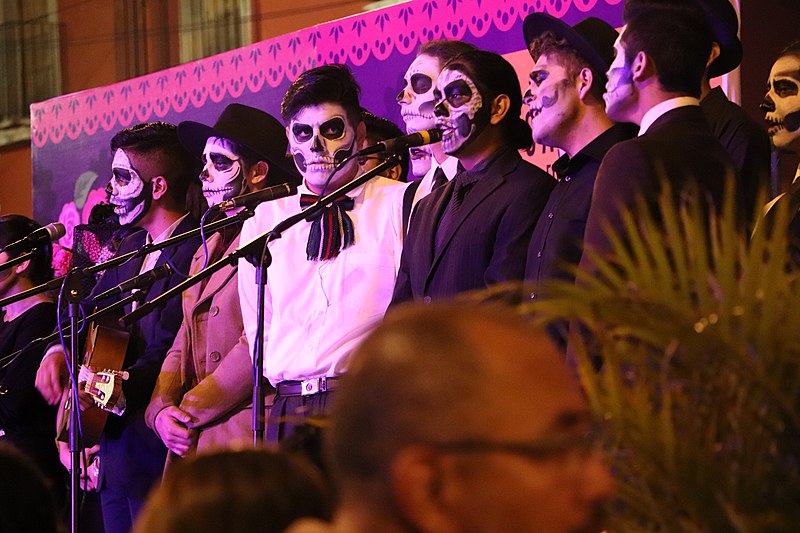- 14 3402-5578
- Rua Hygino Muzy Filho, 737, MARÍLIA - SP
- contato@latinoobservatory.org
 wikimedia Commons - Foto: Alejandra Echevarría
wikimedia Commons - Foto: Alejandra Echevarría
Millions of Mexicans inside and outside the United States celebrate “Día de los Muertos”, or “Day of the Dead”, on a holiday in which indigenous and Catholic traditions mingle to honor loved ones who have died.
According to tradition, while the dead are celebrated for a few days, the souls of loved ones return to Earth to share memories with the living again. On Nov. 1, the deceased children are paid tribute and, on Nov. 2, tributes are concentrated on the adults who are gone. These days, they also celebrate “All Saints’ Day” and “All Souls’ Day”, respectively.
“Día de los Muertos is celebrated not just across Mexico, but also in U.S. cities such as Los Angeles and New York, where large offerings, parades and cultural events are held. Countries like Spain, the Philippines, Brazil and Guatemala, among others, also have traditions to celebrate their deceased. Both public places and homes are filled with altars or offerings to commemorate loved ones with their favorite things, and decorations include cempasúchil flowers (marigolds), paper cut-outs, candles, salt, water, chocolate, sugar skulls, pan de muerto (bread of the dead) and the favorite foods and liquor of the deceased”, according to NBC News.
Popular beliefs vary depending on the Mexican region. In addition to November 1 and 2, October 28 is celebrated for those who died tragically or accidentally, and October 30 is dedicated to those who died unbaptized and are in limbo.
The ancient Mexicans considered death a transition, not the end of existence, but the beginning of the journey to Mictlan, the eternal resting place in Aztec mythology.
According to Diana Martínez, an academic at the Institute of Anthropological Research at the National Autonomous University of Mexico (UNAM), “Following the Mexican Revolution and the first years of independence, what it meant to be Mexican was re-evaluated, and that promoted a series of traditions such as the Day of the Dead. In the 1930’s, President Lázaro Cárdenas promoted the celebration, trying to distance it a little from the Catholic Church and emphasizing its Indigenous, pre-Hispanic roots”.
In 2008, UNESCO declared Día de los Muertos an Intangible Cultural Heritage of Humanity, and in recent years it has transcended borders, becoming a cultural phenomenon enhanced by movies such as Pixar's "Coco," which grossed more than $800 million worldwide.
According to NBC’s publication, “The Day of the Dead was prominent in the memorable opening scene of the 2015 James Bond movie ‘Spein itctre’, in which actor Daniel Craig seduces a catrina — the female skeleton — while running, jumping, shooting and exploding a building in the Historic Center of Mexico City during the Día de los Muertos parade”.
It's a case in which reality imitates fiction because that parade had never been done, but now it's celebrated every year; in 2021 over 400,000 people participated in it.
Mexican culture's fascination with and respect for death has been a recurring motif in the country’s literary tradition. Important writers such as José Revueltas, Carlos Fuentes, Octavio Paz and Juan Rulfo have reflected on this in their works.
“What is a fact is that the Mexicans obsession
with mixing death with a celebration of rituals and daily life is something
very much ours at is what draws attention in other parts of the world”, Enrique
Rodríguez Balam, a researcher at UNAM's Peninsular Center for Humanities and
Social Sciences, told NBC.











